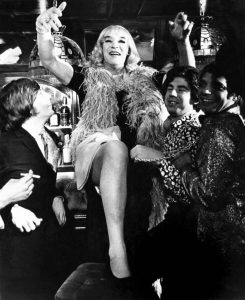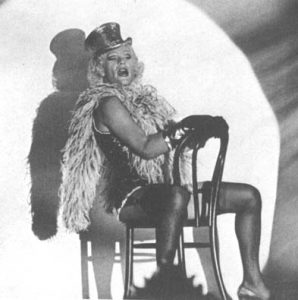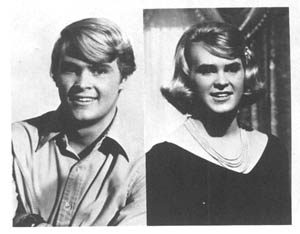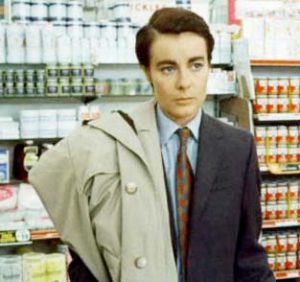Drag in the Cinema: The Seventies: Serious Drag
By Laurie Sheril
With the end of the Sixties came the end of drag that was mostly comic. Beginning with the Seventies, drag started showing a serious side. The spy films of the Sixties were mostly tongue-in-cheek. The Seventies began with a spy film of a more serious note. The Kremlin Letter (1970) came from acclaimed director John Huston, but was certainly one of his lesser efforts. Though the film was based on a best-selling novel by Noel Behn, it did not cause much excitement from either the audience or the critics of the time. George Sanders played an aging drag queen in a brief segment set in a gay bar. Two years later Sanders took his own life, claiming he was bored. If it were not for Sanders’ appearance, even a transgendered audience would have found this a boring film.
Another serious film was Luchino Visconti’s The Damned (1970), loosely based on the Krup family, German munitions makers that assisted Hitler in the years preceding WWII. Helmet Berger donned garter belt, feather boa and heels to imitate Marlene Dietrich (a la The Blue Angel) in an epic movie that had no shortage of decadence and corruption. Later scenes showed homosexual Nazi storm troopers in drunken depravity, some of whom cavorted in drag. For those who only want to see the Berger/Dietrich imitation, it comes early-on in this over 2 1/2 hour X-rated film. (Berger later showed up on television’s Dynasty in a continuing role, unfortunately not in drag though.)
Although it was intended to be serious, 1970s The Christine Jorgensen Story probably brought more laughter than tears or pathos to ‘70s
audiences. Although it was from noted producer Edward Small and released by United Artists, it seemed to be more of an exploitation film than a serious approach to one of the world’s first, and most famous transsexuals. No small part of the blame for the failure of this film goes to the miscasting of an unknown, John Hansen, in the role of George/Christine. As one critic pointed out at the time of the film’s release, Hansen seemed too femme as George and too masculine as Christine. He looked totally uncomfortable in a dress and heels . . . and that came across on the screen. Hansen had a couple of more film roles (including a television film based on The Time Machine) and then slowly faded into oblivion.
Fortune and Men’s Eyes started out as a stage play with Sal Mineo. In 1971 in was turned into a movie without Mineo but with Wendell Burton (who at the time was in a hit film, The Sterile Cuckoo). A gritty drama about prison, it’s “homosexuality behind bars” theme gained it publicity but little praise from film critics. Some of the lighter (and best) moments came from actor Michael Greer who swished around as the effeminate “Queenie.” The highlight of the film may have been the prison show with Queenie in full drag bounding down the aisle in front of guards and prison officials! (Greer was also seen in 1969s The Gay Deceivers . . . though not in drag.)
1972s I Want What I Want featured no men in drag, but it did feature an extraordinary performance from actress Anne Heywood in the role of a young man who longs to become a young woman (Wendy… as he calls himself). A dramatic film with transsexuality as its theme, it was based on a book by Geoff Brown. Though the film differed somewhat from the book, and probably some would have preferred a man cast in the Roy/Wendy role; it nevertheless was a powerful film. In some ways you did get the feeling that Heywood was a man playing a woman… not a woman playing a woman.
Category: All TGForum Posts







